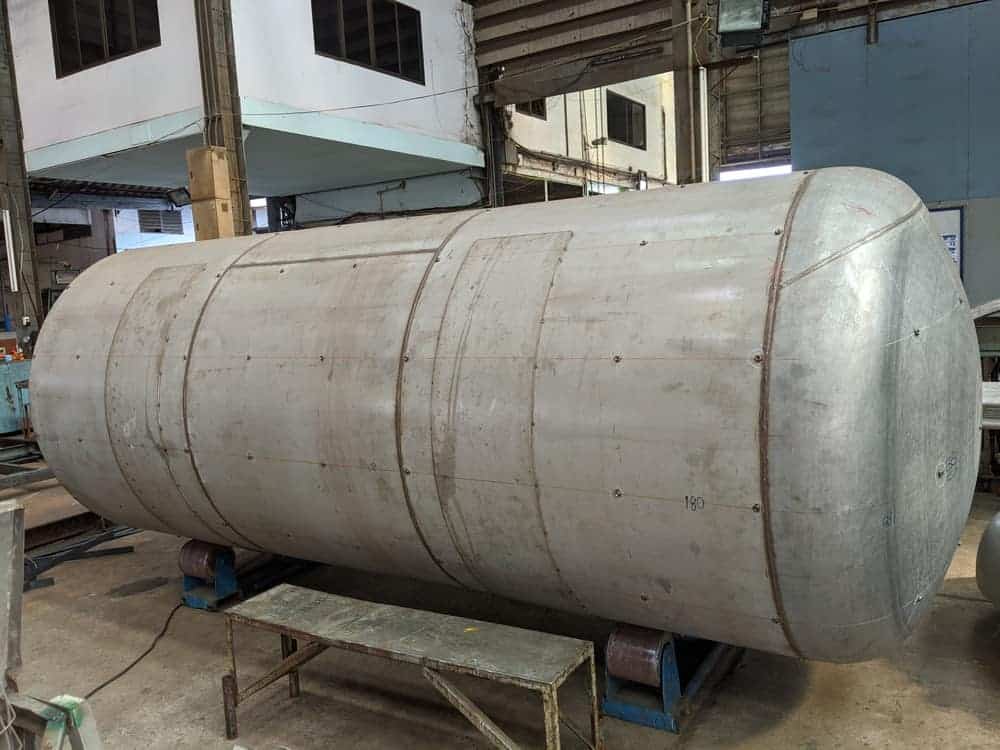
Vessels are used in critical industrial applications to store or process fluids at high pressure. Standard pressure vessels are designed o contain fluids at pressures greater than 15 psi. High-pressure vessels can withstand 10,000 psi and above. With the inherent risks of high-pressure environments, a pressure vessel should display the optimal structural and material properties that meet or exceed all industry requirements.
Depending on the application, not all materials can provide the desired mechanical strength or corrosion resistance required for the safe operating of the pressure vessel. To meet requirements in these scenarios, welders often turn to cladding vessels with different materials. Cladding allows the vessel to operate in high-pressure conditions without compromising performance and safety. In this article, we will discuss why cladding vessels may be advantageous and explore the role of orbital GTAW in the process.
Cladding Enhances Vessel Performance
Because storing pressurized liquids requires significant mechanical strength, carbon steel is a standard choice among welders. Due to the chemical properties of the stored content, corrosion resistance is also a necessary, as corrosion and wear are linked to pressure vessel failure. Corrosion can result from:
- Exposure to dissolved oxygen or high temperatures
- Unequal stress distribution at different parts of the component
- Copper deposits.
To account for these issues, manufacturers can choose materials like stainless steel or nickel alloys, or they can add a corrosion-resistant layer through cladding.
Cladding is simply the process of adding or depositing a layer of material to the workpiece to improve its structural integrity. This can accomplished with either a mechanical process like explosion bonding or by a fusion welding process over the inner surface of the vessel. The corrosion-resistant clad layer protects the vessel against the aggressive reactions from the stored liquid while enhancing the vessel’s strength. For instance, in reactor pressure vessels, an austenitic stainless steel layer is clad over the ferritic base metal. The austenitic layer, consisting of 16 to 25% chromium content, provides better corrosion resistance and reduces the effect of thermal shock in case of rapid temperature fluctuation.
Orbital GTAW for Cladding Vessels
Orbital GTAW is a trusted process for weld cladding that leverages the basic GTAW principles. A cladding torch is positioned to uniformly deposit the additional metal layer while the power source controls the heat input, gas flow rate, oscillation, and feed rate. The voltage control enabled with GTAW can be used to manage the dilution rate and, consequently, the weld pool. This control is key to improving the quality of the clad.
The orbital system provides flexibility in weld head positioning, allowing welders to clad workpieces with geometries other than a flat surface. This is particularly advantageous when cladding vessels that require maneuvering along tight spaces or near the connecting points. For a vessel with a thickness of 75 to 85mm, 3mm cladding is generally preferred. The dilution rate should be just enough to ensure proper bonding with the base metal. In addition to the structural benefits of cladding, an orbital GTAW process can ensure weld consistency, flexibility, and reliability.
Strengthening Vessel Performance by Cladding
A primary purpose of cladding vessels is to make them corrosion-resistant while enhancing their mechanical strength. Additional cladding benefits include an increased resistance to wear and stress cracking, as well as an extended operating span that is especially desirable in chemical processing industries. For manufacturers to experience the full array of cladding benefits, though, they must choose the appropriate cladding technique.
Orbital GTAW can help ensure precision cladding for vessels that require strict adherence to industry standards. Weld heads like Model 94 and Model 2 can perform consistent ID or OD cladding for your vessel system—including at the inlet/outlet. Whether you need to repair damaged parts or strengthen the vessel, an orbital GTAW solution can help improve the outcome of cladding applications and enhance the vessel’s safety, quality, and performance.
Arc Machines, Inc. provides a range of orbital weld heads ideal for cladding vessels to help keep your storage and processing unit resilient to metallurgical problems. For inquiries regarding products, contact sales@arcmachines.com. For service inquiries, contact service@arcmachines.com. Arc Machines welcomes the opportunity to discuss your specific needs. Contact us to arrange a meeting.




